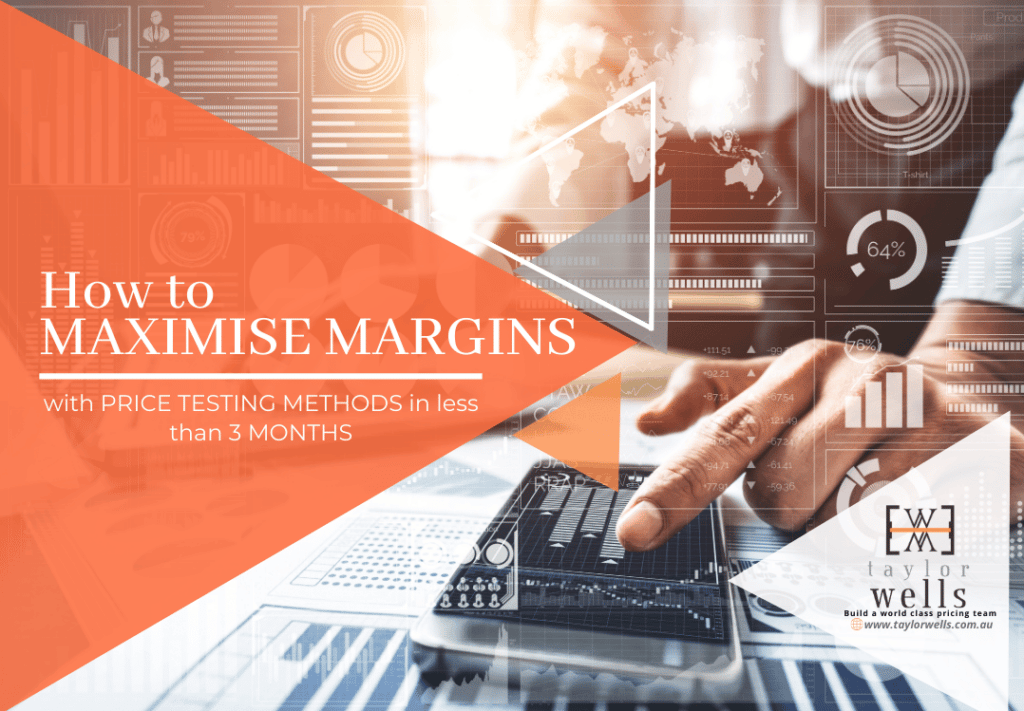
How to Price an App: Creating a Profitable and Scalable Mobile App Business 📱
Do you know how to price an app? Do you price your app based on assumptions i.e., how much you think it’s worth? Or does your app pricing give you profitability and scalability?
>Download Now: Free PDF How to Maximise Margins with Price Trials
These days, mobile apps are more than just a fad. They serve as an extension of your business and are considered the most convenient and efficient way to reach out to a worldwide platform of users.
Recent statistics show that with more than 3.2 billion smartphone users all over the world, it’s not surprising that the mobile app industry is growing. In fact, by 2023, phone apps are anticipated to make more than $935 billion in revenue.
Are you pricing your app correctly? How much profit are you going to contribute to the $935 billion expected revenue by 2023?
With the striking increase of apps, you cannot just price your app based on presumptions. If you are an app owner, you need to consider various intuitive and empirical factors before setting a price. The price list you create can either make or break your app. Regardless of how amazing your app is, pricing it inaccurately will cause its downfall. However, you don’t need to worry because there are ways to avoid the risk if you know how to properly set the price for your app.
If you plan on developing or creating an app and have not given much of an afterthought to pricing, then don’t fret. In this article, we will discuss how to create a price list for an app. We will also provide you with a real-world example of Apple’s app pricing tricks. Apart from that, let’s discuss the benefits that the App Store offers and the estimation of revenue gains from the key features of Apple.
We believe that providing value to the end-users is key behind any app, but pricing it correctly is an equally important aspect – and one that a business should not overlook. Pricing should be determined carefully in order to create a scalable and profitable mobile app business.
Apple is an example of app pricing: What do you gain for Apple’s 30%?
Are you truly earning while giving Apple so much?
Although you’re in the process of building a really cool and entertaining app, the main point is to position it in ways that gain margins and profits. As a matter of fact, creating an app is easier than determining its cost or value to customers. You must know when and what features to charge for the app.
Let’s take a look at Apple’s app pricing. What are the advantages that the App Store offers? What are the revenue gains estimate from its key features?
Apple’s App Store ecosystem provides an assurance that you can seize a larger audience and earn more money compared to building it on your own. For all the benefits that Apple provides, you have to pay 30% of all your profits. For subscription products, however, that rate goes down to 15% if you keep your customers above the 1-year mark.
How to Create a Price List for an App: App Store Benefits
- Different platforms including iOS, iPad, Mac, Apple Watch, and Apple TV
- Global audience access
- Analytics on app and revenue
- Zero hosting fees
- Payment processing
Based on Apple’s latest numbers, these multiple platforms and audiences spent approximately half a trillion dollars. According to App Annie, fewer than 3,000 apps were generating more than $1 million a year in revenue.
If you have a subscription business, Apple has the tools needed to make you successful such as:
- Reducing churn rate
- Increasing prices
- Introductory offers
Estimation of Revenue Gains from Apple’s Key Features: How to create a price list for an app
Let’s check some of the benefits of selling digital products on Apple’s App Store. Then, create a simple estimation to find out how much money you earn from Apple by using their platform.
Selling a product in various foreign jurisdictions comes with a lot of challenges including taxes, currency conversion, and other legal requirements. Every app developer requires a platform to address these types of challenges.
We all know that selling your app in different countries is not as simple as turning on a switch. However, for the sake of simplicity of our example, let’s suppose that our app is all good and ready to roll.
For an app that sells presently in the United States, there is a 40% growth in the potential audience by merely expanding into other countries such as the United Kingdom, Canada, and Australia (with English as their official language).
Then, let’s examine involuntary churn. Some of the reasons for involuntary churns include fraud, card limits, expired cards, and more. First, we need to estimate a baseline rate. Say, if the expiration of the average credit card is every 3 years, and your customers are not updating their billing information. For this reason alone, you should anticipate seeing around 2.7% of their credit cards declined. Let’s suppose further that with all the other reasons declines may occur, you hit 3%.
Apple put so much effort into decreasing involuntary churn. Another benefit that Apple provides is that your app is pooled in with every other way a customer spends money using their iCloud account.
Meaning, even if a user’s credit card expires, another payment may arise before yours is due. This forces customers to update their card information. Recurly is a subscription management platform that puts average involuntary churn in consumer subscriptions at approximately 1.11% and about 5.94% for voluntary cases.

In our example, we’ll check what your revenue might look like with nothing in place to alleviate involuntary churn. Then, use the average 1.11% involuntary churn rate.
Here’s how to price an app: Summary of Model Parameters
- Starting Number of Users: 1,000
- Average price (monthly): $4.81
- Average Subscribers (monthly): 100
- Voluntary Churn Rate: 5.94%
- Involuntary Churn Rate (with no mitigation): 3.00%
- Average Involuntary Churn Rate: 1.11%
Annual Revenue Analysis
Let’s analyse our app’s annual revenue from three points of view:
- With no involuntary churn mitigation
- When using Apple’s involuntary churn tools
- Expanding to other English-speaking countries using Apple’s involuntary churn tools
So, your app generates about $60,000 over 12 months without involuntary churn mitigation. However, by using Apple’s involuntary churn tools, we increase our revenue to around $65,000 in a year. And by releasing the app in English-speaking countries (such as the United Kingdom, Canada, and Australia), revenue can grow to a little over $75,000.
Did we defeat Apple’s 30% take? Not really. That’s only about 25% annual increase in revenue. However, we are well above the 15% revenue cut Apple gets right after having a subscriber for 12 months.
Many things have changed with payments and subscription management for selling in-app purchases since the App Store started in 2008 and Apple’s StoreKit framework in 2009. The development of platforms such as Stripe and Shopify have definitely changed the environment from the time Apple landed on its 30% number.
Is Apple’s App Store 30% cut worth it? Apple surely provides various benefits, however, with a SaaS environment that’s drastically changing, you must know the number of available resources to address the challenges of increasing your revenue.
The big question is: how should you price an app?
First of all, it is very significant to find out what’s going on in the market. Therefore, you need to do a competitive analysis. Find out other similar apps and their rates. You can catch the customer’s attention by charging a lower price than your competitors. Keep in mind that you need to charge more for superior products if your app is more advanced or complex.
Before setting and creating a price list for an app, be aware that it sets the expectations of the consumers. They anticipate using the app either for free or priced at 99 cents only. However, other complex and more advanced apps sell for $2.99 to $4.99. Similarly, top-tier apps should have extensive features and functionalities to do well in a competitive market. Therefore, they should look captivating and offer value for users.
Implications
So, how do you create a price list for your app? Setting the price for your app must have factors involved such as market competition, research, as well as defining the value and functionality of your app. In order to run a successful mobile app business, you have to understand consumer psychology.
How you set the price of your product determines the success of your app based on the volume of downloads and user retention in the long run.
Developers should not create a fixed price list for their apps. This gives them room to experiment with different price points. A great way to do this is by launching the app with a higher price, then eventually lower it over time. Most often, launch time is the perfect time to lure more users to use and download an app.
〉〉〉 Get Your FREE Pricing Audit 〉〉〉
Conclusion
The app market is rapidly growing. Thus, to enter the market seamlessly and create a niche, it’s important to choose the right pricing strategy for your mobile app.
Remember that your product pricing strategy should meet market and customer expectations, provide perceived value, and guide you to accomplish business goals.
Apps offered for free or at a very low price gain larger market shares and enter the market smoothly. On the other hand, higher-priced apps have the potential to gain a positive ROI.
For a comprehensive view on driving pricing strategies to maximise growth,
Download a complimentary whitepaper on How to Drive Pricing Strategy to Maximise EBIT Growth.
Are you a business in needs of help to align your pricing strategy, people and operations to deliver an immediate impact on profit?
If so, please call (+61) 2 9000 1115.
You can also email us at team@taylorwells.com.au if you have any further questions.
Make your pricing world class!
Related Posts
Leave a Reply Cancel reply
Categories
- marketing strategy (20)
- Organisational Design (14)
- Podcast (114)
- Pricing Capability (68)
- Pricing Career Advice (10)
- Pricing Recruitment (15)
- Pricing Strategy (201)
- Pricing Team Skills (10)
- Pricing Teams & Culture (15)
- Pricing Transformation (25)
- Revenue Model (11)
- Sales Effectiveness (15)
- Talent Management (5)
- Technical Pricing Skills (29)







